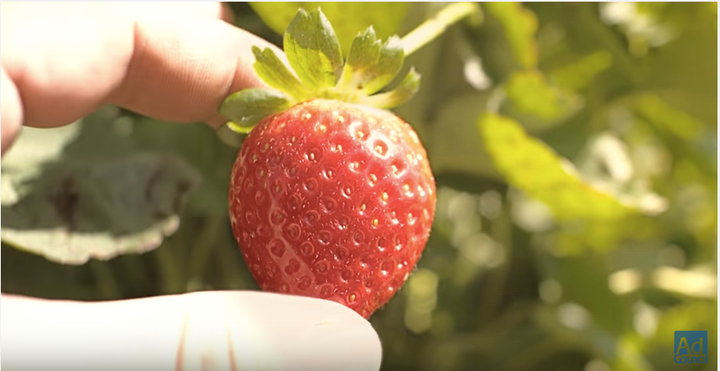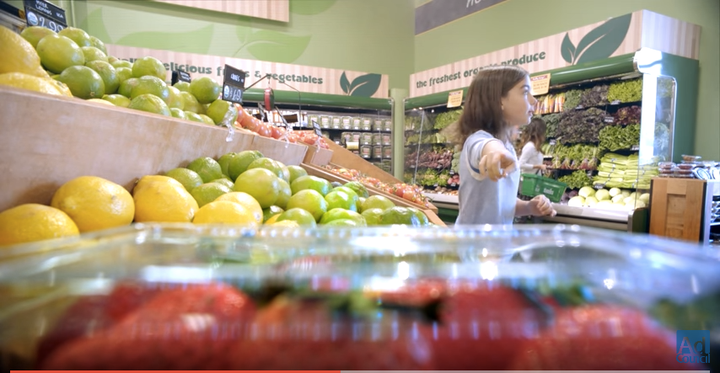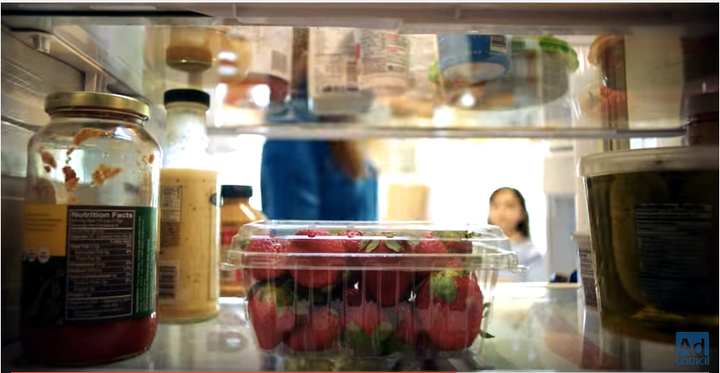Every strawberry has a story. Often, it’s a tragic one.
A recent video from the Natural Resources Defense Council tells the story of one strawberry's journey from farm to trash can. The video follows the strawberry as it's taken from a crop field to the supermarket to the back of a family's fridge, where it grows moldy and inedible.
The strawberry, which had traveled so far in the hopes of being happily munched upon, is never eaten. And it's story is not unique. Up to 40 percent of all food in the U.S. meets the same fate.

The video -- which was produced by the NRDC, the Ad Council and marketing firm SapientNitro -- is meant to show consumers how much time, energy and labor go into producing food that ends up in the garbage. While it focuses on one strawberry, the video highlights the problems endemic to a food system that routinely fails to deliver good food to people’s bellies.
The video, which is also airing as a television ad, is part of a larger public service ad campaign called “Save The Food." Dana Gunders, staff scientist at the NRDC's Food and Agriculture Program, hopes the campaign will encourage consumers to throw less food in the trash.
“The real win would be if people start wasting less food,” Gunders told The Huffington Post.

Getting people to waste less food is a difficult task, Gunders noted. But she hopes the campaign will raise people’s awareness of the issue and get them to take small steps to reduce waste.
“It inspires actions and innovations beyond people’s own kitchens,” Gunders said. If people are motivated by the campaign’s message, “they’ll take that into whatever else they do during their day.”
The campaign, which launched in April, is one of a growing number of efforts by nonprofits, businesses and lawmakers to cut down on the country’s food waste. For instance, the environmental nonprofit Feedback is helping to get uneaten food to people who need it. Walmart has committed to simplifying date labels on its food in the hopes of minimizing wasted food. And lawmakers have recently introduced several pieces of legislation in Congress aimed at slashing food waste.
Why the sudden uptick in efforts to tackle the country’s waste problem? People are drawn to the issue of food waste because fixing it “feels very doable,” Gunders said.

“It doesn’t take much to waste less in your own life tomorrow and you can feel good about that and you should feel good about that,” Gunders said. “That’s really refreshing in an era of big problems like climate change.”
Right now, the campaign is only in a handful of cities across the U.S., but the organization plans to push out it out to more cities over the next nine months. The full campaign will run for two years, Gunders said. Hopefully, that’s enough time for it put a dent in the country’s food waste problem.
CORRECTION: An earlier version of this story incorrectly referred to the Natural Resources Defense Council as the "National Resources Defense Council."
More stories like this:
